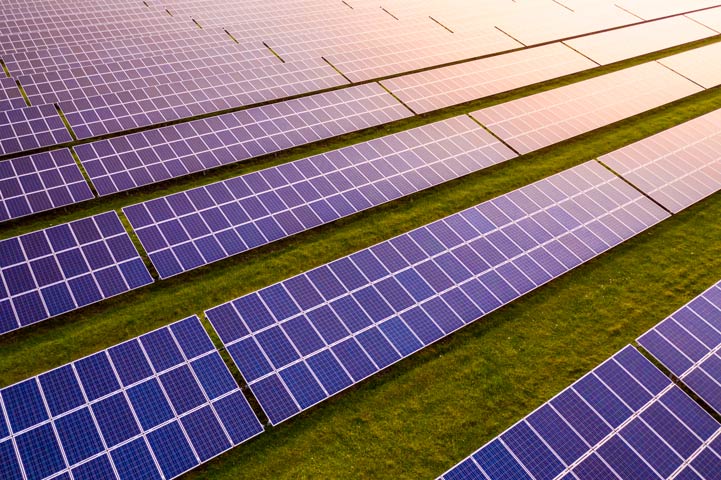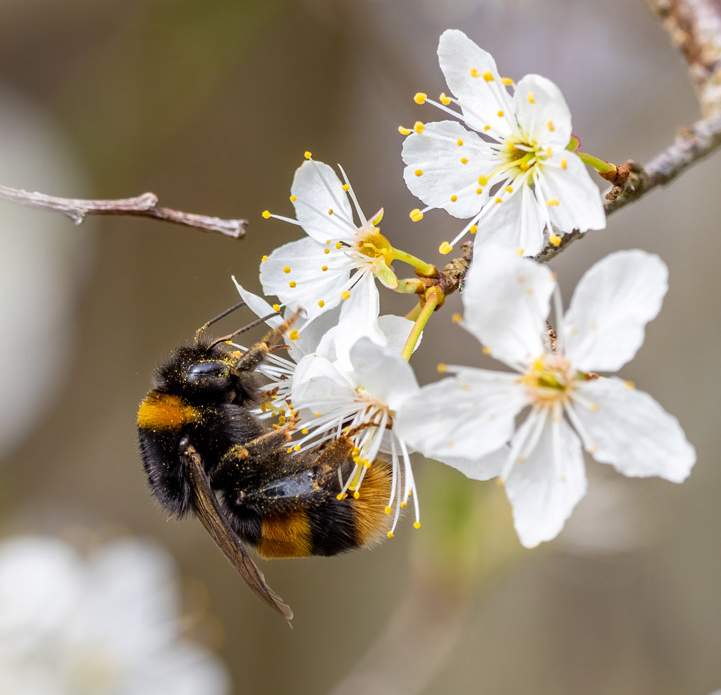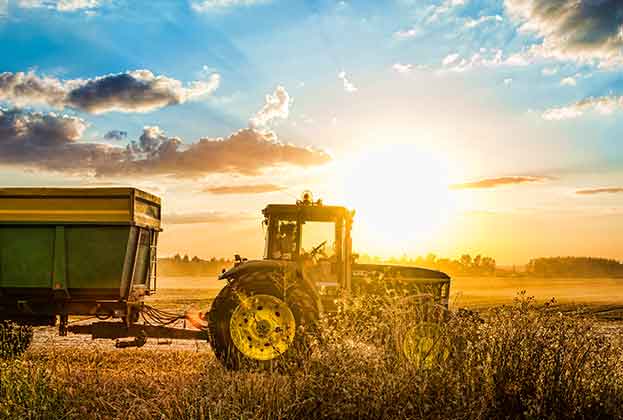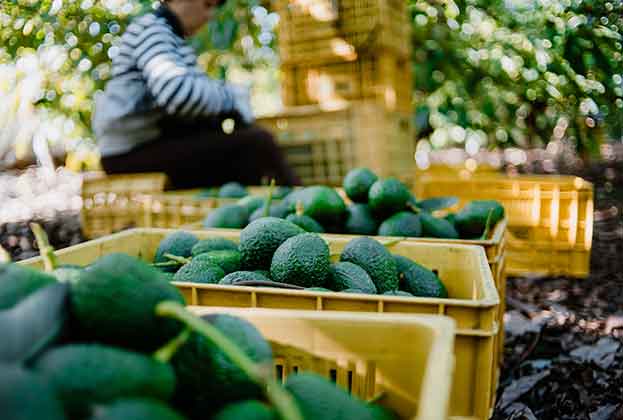We highlight the global opportunities and the potential issues facing different countries
The pressures on farmland have never been greater. Besides food production, global policymakers are placing targets on renewables, housing, biodiversity, forestry and water.
As well as a knowledge of the restrictions on foreign ownership, there is a need for those looking to buy farmland overseas to understand the environmental targets placed on landowners. Some may provide income-related opportunities while creating sustainable solutions. The regulatory environments and pace of policymaking vary significantly across the world. Our research has highlighted three competing land uses to food security that can offer opportunities for landowners and we discuss how these uses are being administered in different countries.

Renewables
Solar PV installed power capacity is set to surpass that of coal by 2027, becoming the largest source of power in the world. However, solar energy within the UK has received negative media attention for taking high-quality land out of food production. Currently, solar covers approximately 0.1% of UK land. Approval has been given for a 1,060-acre solar farm at Longfield in Essex, making it the largest in the country. In comparison, at the time of writing, the five largest solar farms in the world by surface area are:
- Mohammed bin Rashid al Maktoum Solar Park, in the UAE at 19,000 acres
- Bhadla Solar Park, in India at 14,000 acres
- Pavagada Solar Park, in India at 13,000 acres
- The Tengger Desert Solar Park, in China at 10,600 acres
- Benban Solar Park, in Egypt at 9,140 acres
Source: The Eco Experts
The food versus fuel debate is not unique to the UK. China, currently the largest producer of solar energy, has recently announced that new solar developments should not be built on farmland, grasslands or protected forest lands. In contrast, Germany, where agrivoltaics are increasingly popular, has announced that where solar arrays can share land with farming, these will be allowed on set-aside land designated to promote biodiversity under the Common Agricultural Policy. Similarly, in Spain renewables are being encouraged; since July 2023 environmental evaluations are no longer necessary for wind and solar parks that are outside Natura 2000 conservation areas and below 220 kilowatts in capacity.

Biodiversity offsetting
Biodiversity is declining at an alarming rate, primarily due to human activities, pollution and climate change. One method of compensating for the losses caused by human activities is biodiversity offsetting, which provides measurable biodiversity gains in response to unavoidable losses. While Biodiversity Net Gain (BNG) only becomes mandatory in England from November 2023, other countries have been undertaking biodiversity offsetting for decades, albeit primarily under a 'no net loss' criteria as opposed to a 'net gain'. Currently, over 100 countries have biodiversity compensation policies in place or enabled.
One challenge for many countries is the design and implementation of a register or database to allow for monitoring and evaluation of the offset sites. A 2022 review by Kujala et al, found that the lack of accessibility and transparency in existing registers is one of the biggest issues in ensuring that biodiversity targets are being achieved.
In New South Wales, Australia, the Biodiversity Offsets Scheme (BOS) provides offsets to compensate for significant biodiversity loss from development projects as the final step in the mitigation hierarchy. Like BNG, it is implemented through the planning system, with proposed developments undertaking an assessment that determines offset obligations, and landholders establishing Biodiversity Stewardship Agreements to generate credits. However, an audit of the scheme in August 2022 found it was failing to protect the species and ecosystems it was set up for. Reportedly, the supply of credits is lacking and poorly matched to the growing demand. Additionally, the governing bodies are not taking the necessary steps to ensure the biodiversity outcomes on landowners’ sites are monitored, with around 90% of the sites falling short. This has caused some concern, particularly considering recent consultations on an Australian national biodiversity market, aiming to launch in 2024.
Afforestation
Afforestation has numerous benefits, with one of the most prevalent being the potential for carbon sequestration. One hundred and forty countries committed to both net zero emissions by 2050 and to halting and reversing forest loss by 2030 at COP26 resulting in the Forests and Climate Leaders’ Partnership launching at COP27. It is clear, therefore that afforestation is high up the agenda as a land use across the world.
Currently, forest covers over four billion hectares of the Earth, which accounts for around 31% of the total land area. Of the countries included within the global index, eight fall beneath this average, with the other eight being equal to or above. Positively, 11 countries have increased their forest area as a percentage of land area from 2000–2020 (figure 3), with the largest increase occurring in Uruguay at 3.8%. Alarmingly, however, Brazil has decreased its percentage by 6.5% in the same period.
With net zero goals being a catalyst for planting, there has been some dispute as to whether countries are too reliant on carbon offsetting to hit these goals. New Zealand’s independent climate advisory commission has advised the government that by 2050 the country will still be reliant on fossil fuels and further emission reduction work will need to be undertaken instead of purely relying on tree planting.
Food security
All of these factors are competing with food security and as the world’s population grows and we look to mitigate climate change across the globe, there is no doubt that further pressure will be placed on agricultural land. Figure 4 shows the relatively stable levels of pasture and cropland since the 1960s, while population growth is on an upward trajectory and is estimated to rise to 9.7 billion by 2050. Not only will population increase, but increases in height, BMI and wealth mean the average daily calorie requirements could rise from 2,285 kcal per person in 2010 to 2,538 kcal in 2100, an 11% increase. If we don’t adapt, Bajzelj et al, estimated that by this point we would need 120% more water, 42% more cropland, lose 14% more forest, and produce 77% more GHG emissions.
Sustainable intensification and new technologies are required to ensure we continue to feed the world; since 1961 the arable land area needed to produce a fixed quantity of crops has fallen by two-thirds from 1 to 0.29 due to improved yields (Our World in Data). Arguably this intensification has led to the soil degradation we are now endeavouring to reverse and future efficiencies are more likely to come from technological advances. Genetic engineering of crops could improve nutritional content, alongside providing more resistance to pests or disease and even increase tolerance to drought, raising yields of the existing croplands.
Lab-grown meat has the potential to be a more sustainable alternative to traditional meat production. Of the food products in a study by Poore and Nemecek (2018), beef and lamb topped the charts for land used per 100 grams of protein produced. The lab-grown alternative would need less land, however, at this point, it is not commercially viable. In addition, a recent study has suggested that with current technologies the global warming potential is in fact worse than traditional beef products. There is also the argument that the land used for beef and lamb may have limited alternative uses besides meat production, so a mixed approach in the future may be the answer.
Vertical farming can produce crops in a smaller space, ideal for where land is scarce, but at this stage, they are difficult to justify in terms of cost. Savills Research estimates a vertical farm can cost as much as 750% more than a basic glasshouse in the UK (see our Spotlight on Controlled Environment Horticulture).
A combination of these will likely be utilised in the future as the pressures on land grow and it will be interesting to see how consumer tastes and preferences evolve and the prevalence of environmentally led decision-making increases.
Read the articles within Spotlight: Global Farmland below.
.jpg)

